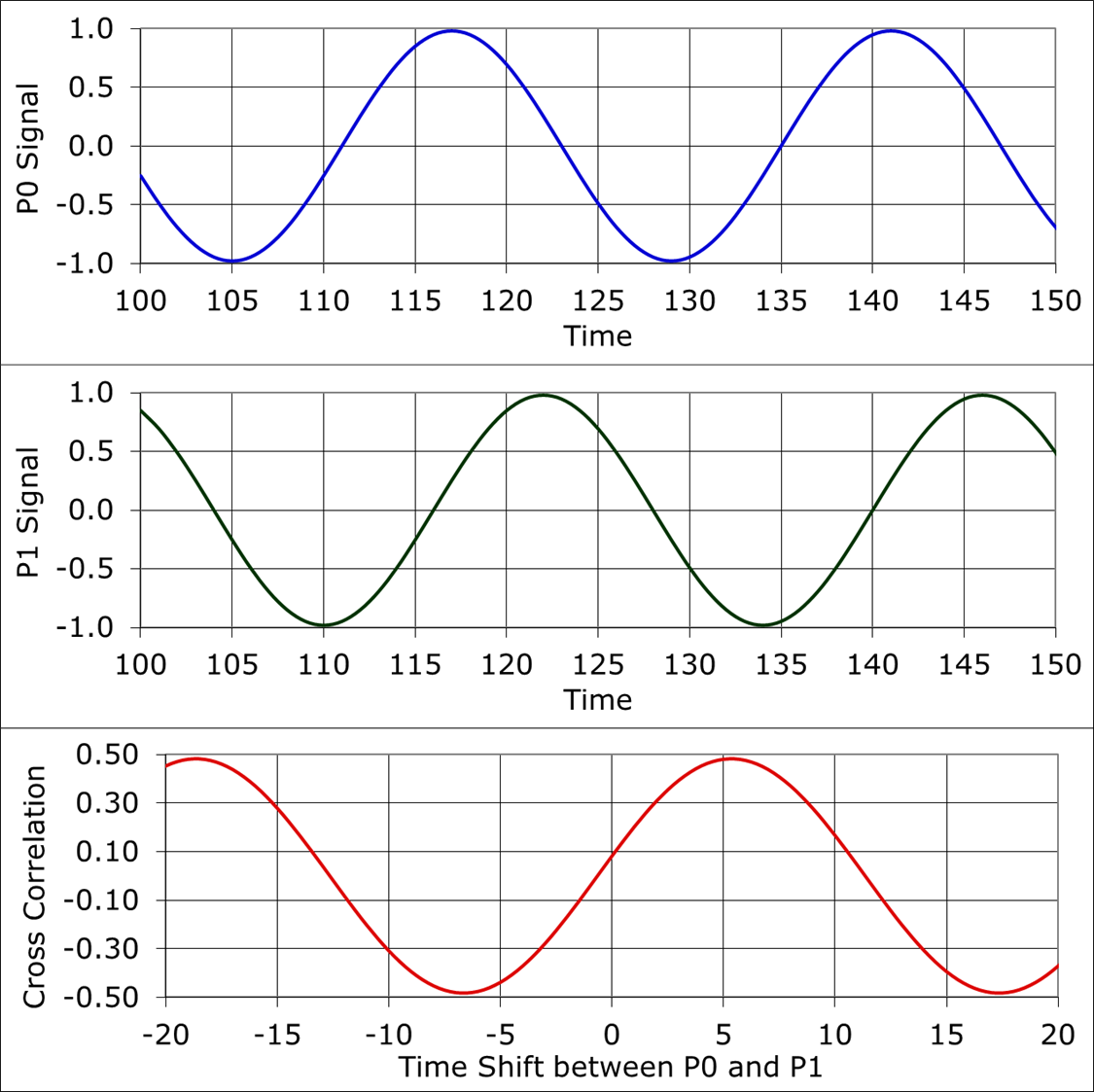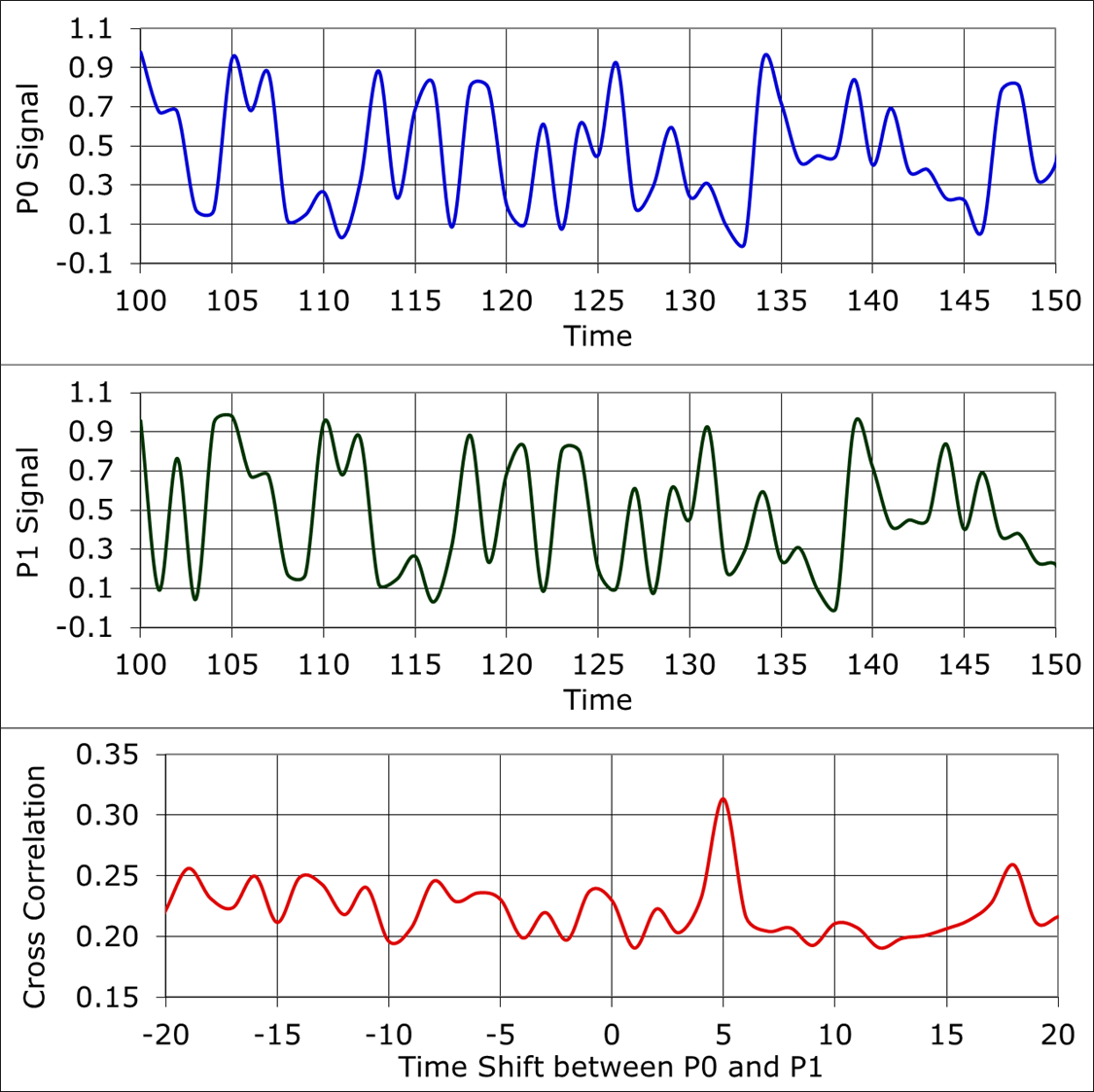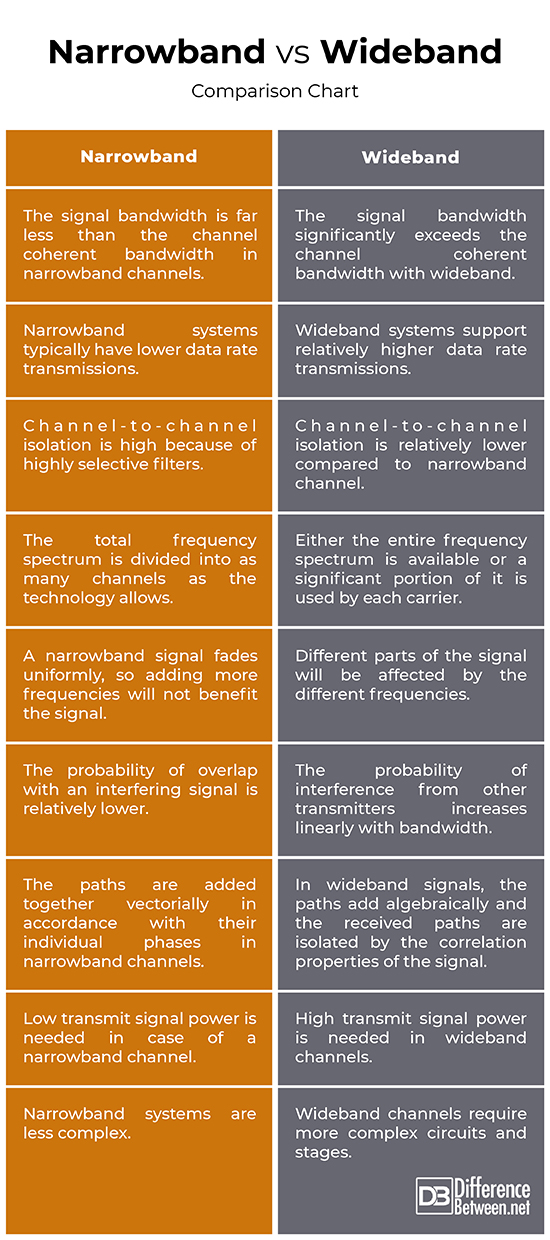Difference Between Narrowband and Wideband
One of the very effective ways of achieving high capacity in any communication network is resource-sharing. As far as mobile radio systems are concerned, the resources are the channels, or, in a more general sense, bandwidth. Depending on how the available spectrum is utilized, the system can be broadly classified into narrowband and wideband. Most of the wireless protocols are known as wideband, but narrowband also has its place, especially for LPWAN. Let’s take a look at some key differences between the two.

What is Narrowband?
Narrowband refers to radio communications whose signal bandwidth is within the coherence band of a frequency channel. This means the bandwidth of the signal does not significantly exceed the coherent bandwidth of the frequency channel. Narrowband systems divide the total frequency spectrum into several narrowband channels.

What is Wideband?
Wideband refers to broadband communications that uses a relatively wide range of frequencies. It refers to radio channels whose operational bandwidth may significantly exceed the coherence bandwidth of the channel. Unlike the narrowband architecture, the whole or a significant amount of the spectrum is available to all the users in wideband systems.
Difference between Narrowband and Wideband
Definition
– Narrowband refers to radio communications that carry signals in a narrow band of frequencies. In narrowband communications, the signal bandwidth is far less than the channel coherent bandwidth which means the bandwidth of the signal does not significantly exceed the channel coherent bandwidth. Wideband, on the other hand, refers to a broader frequency communication channel that uses a relatively wide range of frequencies. In wideband communications, the signal bandwidth significantly exceeds the channel coherent bandwidth.
Date Rate
– When talking about narrowband, we are talking about signals that are 100 kHz or smaller in bandwidth, which is fundamentally determined by the data rate. Narrowband systems typically have lower data rate transmissions, whereas the wideband systems support relatively higher data rate transmissions. Wideband signals are generally greater than 1 MHz in bandwidth. More bandwidth translated into higher data rates, in terms of transmitted and received signal information.
Architecture
– In the narrowband architecture, the total frequency spectrum is divided into as many channels as the technology allows. Each channel is comprises of a set of two carrier frequencies used for two-way communication: reverse channels (frequencies for the uplink) and forward channels (frequencies for the downlink). In the wideband architecture, either the entire frequency spectrum is available or a significant portion of it is used by each carrier. FDMA is intrinsically narrowband architecture whereas CDMA is wideband.
Fading Model
– Narrowband channels are called flat fading channels because they usually pass all spectral components with equal gain and phase to one another. A narrowband signal will fade uniformly, so adding more frequencies will not benefit the signal. Wideband channels, on the other hand, are called selective fading or frequency selective fading channels because different parts of the signal will be affected by the different frequencies.
Interference
– In narrow channel bandwidth, the probability of overlap with an interfering signal is relatively lower, but this is offset to a large extent by the more severe impact of frequency selective fading. Narrowband interferers may suffer loss due to selective fading and thus will have a lower probability of affecting another system. In wide channel bandwidth, the probability of interference from other transmitters increases linearly with bandwidth, but these signals are subject to frequency selective fading, although the fading parameters are likely to be different.
Signal Power
– In narrowband signals, the paths are added together vectorially in accordance with their individual phases, and this interaction among the paths in turn reduces normalized received power. As a result, typically lower transmit signal power is needed in case of a narrowband channel. In wideband signals, the paths add algebraically, and the received paths are isolated by the correlation properties of the signal. So, typically higher transmit signal power is needed in wideband channels.
Applications
– Narrowband systems require less operating power, which makes them ideal for shorter-range, fixed-location wireless applications that require transmission over shorter distances, such as portable mobile devices, including RFID and remote keyless entry devices in cars. Wideband is a low-power technology with the ability to penetrate walls and other physical interferences to radio signals. Applications such as connected cars, IoT devices, 5G wireless communications, internet telephony, video conferencing require wideband channels.
Narrowband vs. Wideband: Comparison Chart

Summary
In a nutshell, narrowband refers to radio communications that carry signals in a narrow band of frequencies. It refers to radio channels whose operational bandwidth does not exceed the coherence bandwidth of the channel. Narrowband systems require less operating power, which makes them ideal for shorter-range, fixed-location wireless applications. Wideband, on the other hand, refers to radio channels whose operational bandwidth may significantly exceed the coherence bandwidth of the channel. One significant advantage of narrowband over wideband is the lower probability of overlap with an interfering signal whereas in wideband channels, the probability of interference increases linearly with bandwidth.
- Difference Between Caucus and Primary - June 18, 2024
- Difference Between PPO and POS - May 30, 2024
- Difference Between RFID and NFC - May 28, 2024
Search DifferenceBetween.net :
Leave a Response
References :
[0]Pahlavan, Kaveh and Allen H. Levesque. Wireless Information Networks. Hoboken, New Jersey: John Wiley & Sons, 2005. Print
[1]Pahlavan, Kaveh and Allen H. Levesque. Wireless Information Networks. Hoboken, New Jersey: John Wiley & Sons, 2005. Print
[2]Tsai, Shang-Ho, et al. Precoding Techniques for Digital Communication Systems. Berlin, Germany: Springer, 2008. Print
[3]Kruys, Jan and Luke Qian. Sharing RF Spectrum with Commodity Wireless Technologies: Theory and Practice. Berlin, Germany: Springer, 2011. Print
[4]Lea, Perry. Internet of Things for Architects. Birmingham, United Kingdom: Packt, 2018. Print
[5]Yacoub, Michel Daoud. Foundations of Mobile Radio Engineering. Boca Raton, Florida: CRC Press, 1993. Print
[6]Image credit: https://commons.wikimedia.org/wiki/File:CrossCorr_Narrowband.png
[7]Image credit; https://commons.wikimedia.org/wiki/File:CrossCorr_Wideband.png
